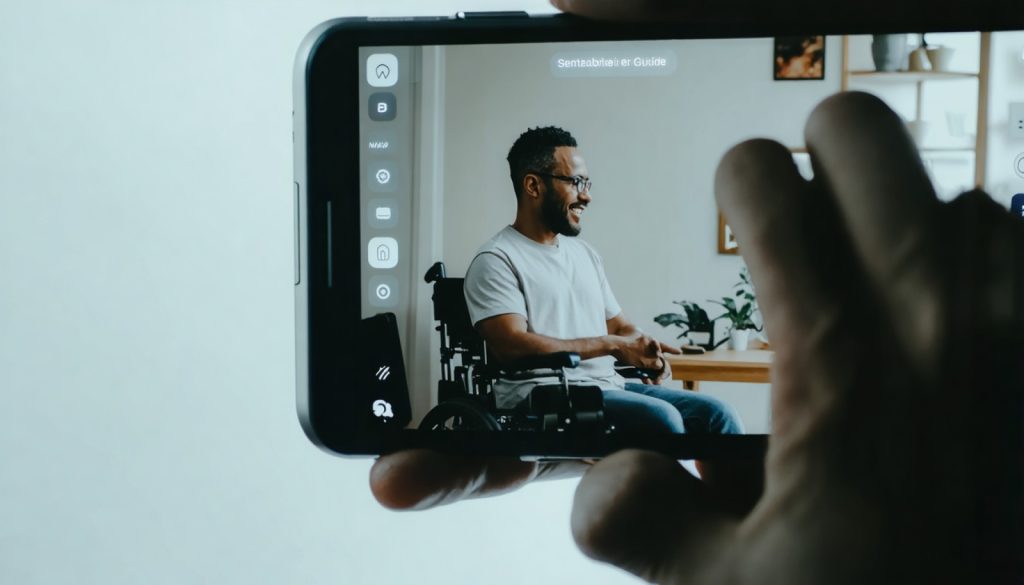
- The Tech Access Product Guide empowers individuals with physical disabilities, offering tools for enhanced independence and safety.
- This comprehensive digital catalog integrates crowd-sourced insights, providing real-world solutions for accessibility challenges.
- It covers a range of categories, from smart home devices to wheelchair accessories, promoting autonomy and inclusivity.
- United Spinal’s Tech Access Initiative ensures technology development is inclusive and empathetic to the disability community’s needs.
- The guide underscores the potential of technology to break down barriers, advocating for inclusive and diverse tech solutions.
Imagine controlling your home environment with just your voice or unlocking your front door without fumbling for keys. These once futuristic dreams are realities now championed by the United Spinal Association through their innovative Tech Access Product Guide. This comprehensive digital catalog stands as a beacon of empowerment, offering tools designed to enhance the lives of those with physical disabilities, including spinal cord injuries and arthritis.
The Product Guide doesn’t just list gadgets; it curates a universe where technology meets inclusivity. What makes this guide truly revolutionary is its crowd-sourced nature, amassing real-world suggestions from people who navigate these challenges daily. It becomes a repository of proven solutions, a virtual community of shared knowledge and empowerment.
As you delve into its offerings, imagine a world where smart thermostats adjust your living space to the perfect temperature with a simple verbal command. Picture a home where voice-controlled devices ensure you can turn off the lights from bed without moving a muscle. These devices are more than just conveniences; they serve as lifelines, offering independence and safety wrapped in sleek, modern technology.
Beyond home management, the guide casts a wide net, covering essential categories like wheelchair accessories, mobility aids, and self-care devices. It shines a spotlight on tools that transform wheelchairs from simple conveyances into personalized vehicles of independence—each accessory a promise of greater autonomy.
Over the past five years, United Spinal’s Tech Access Initiative has tirelessly championed the integration of the disability community’s voice into every layer of technological development. By not only participating in but actively shaping the tech industry’s approach to accessibility, this initiative ensures that products are designed first-hand with empathy and ingenuity.
The true power of the Tech Access Product Guide lies in its message: that technology should be as varied and unique as the people it serves. As it stands, the guide is more than just a list; it is a testament to the potential of technology to transcend barriers and a declaration that everyone deserves access to a world where boundaries are not determined by physical limitations.
Dive into this digital compendium and witness the intersection of innovation and empathy, where each product is a stepping stone on the path toward a more accessible future for all.
Revolutionizing Accessibility: How Smart Technology Empowers Lives
Embracing a Technological Revolution
The United Spinal Association’s Tech Access Product Guide is a transformative force in the realm of accessible technology. This digital catalog serves as a valuable resource for individuals with physical disabilities by providing crucial tools for enhancing their daily living. By thoughtfully curating products that merge convenience with necessity, the guide empowers users through technology while promoting an inclusive society.
How-to Steps & Life Hacks for Using Smart Home Devices
1. Setup Your Smart Speaker: Begin by connecting your device to Wi-Fi and linking it to a voice assistant app on your smartphone. Follow voice prompts to customize settings according to your needs.
2. Integrate Smart Lighting: Use smart light bulbs compatible with your system. Through the voice assistant app, group lights into rooms and set schedules for automation.
3. Optimize Thermostat Control: Install a smart thermostat in an accessible location. Adjust settings through an app or voice commands to create a comfortable environment with minimal effort.
4. Enhance Security with Smart Locks: Replace traditional locks with smart versions. This allows you to control access through a smartphone, providing security and eliminating the need to manage keys physically.
Real-World Use Cases
– Independence for the Elderly: Smart home devices can be programmed to announce reminders for medication, enhancing independence and health management for aging individuals.
– Mobility Aids Innovation: Accessories that transform wheelchairs into smart devices include powered add-ons and enhanced navigation tools, significantly improving mobility and independence.
Market Forecast & Industry Trends
The smart home device market is anticipated to reach approximately $208.3 billion by 2025 (source: Statista). A growing trend is the proliferation of AI-driven accessibility features that learn user preferences to provide a seamless experience, indicative of a shift towards more personalized tech solutions.
Security & Sustainability Considerations
– Security: When utilizing smart devices, especially those connected to the internet, prioritize products with strong encryption and authentication protocols to protect user data.
– Sustainability: Many manufacturers focus on creating energy-efficient devices. Opt for products with recognized energy-efficiency certifications to reduce environmental impact.
Pros & Cons Overview
Pros:
– Increased Independence: Smart devices allow users to perform daily tasks without assistance.
– Enhanced Safety: Automation features such as automatic lighting and smart locks enhance home safety for users with disabilities.
Cons:
– Initial Cost: The investment in smart technology can be substantial, though long-term savings on energy can offset initial expenses.
– Technological Dependency: A reliance on technology may necessitate backup solutions in case of technical glitches.
Actionable Recommendations
1. Start Small: If new to smart technology, begin with a few devices and gradually expand as you become comfortable with their features.
2. Regular Updates: Keep your devices updated to ensure they have the latest security patches and feature improvements.
3. Community Engagement: Engage with others in the disability community to share experiences and discover innovative solutions from peers.
For further exploration into the realm of inclusive technology, the United Spinal Association offers comprehensive resources and ongoing advocacy for accessible innovation. Dive into this digital compendium and empower your life with technology that caters to your unique needs.



